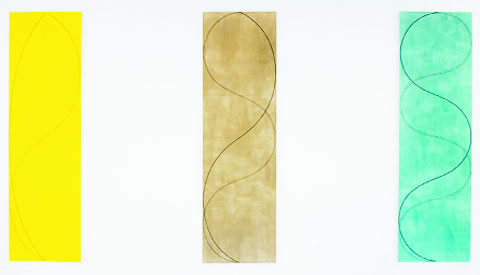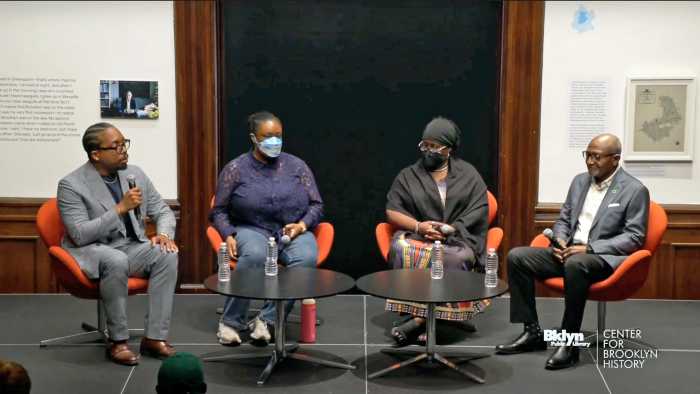Inveterate artist explores columns in Pace Wildenstein exhibit
Robert Mangold’s “Three Columns/Figures 5A” continues the artist’s exploration of line, form and color within the context of columnar structures.
An exhibition of new column paintings by Robert Mangold is on view at Pace Wildenstein in Chelsea. These eight acrylic and black pencil on canvas works range in size from ten to 12 feet tall and one to three feet wide. Also included is one triptych, “Three Column/ Figures 5, 2003.”
All of the paintings have been executed in a single color and completed in the years 2003 and 2004.
Mangold has always been known for the formal rigor of his work. A graduate of Yale’s School of Art and Architecture, he and his fellow alumni Brice Marden, Chuck Close and Richard Serra went on to become some of the most important artists of their generation.
The column paintings, exhibited in a single large gallery at Pace Wildenstein, are a joy to behold. The tall paintings, each of a single washy color, are dissected evenly by a fine pencil line. Thicker single and double graphite lines intersect the pencil line, forming curves running vertically. Descriptions of Mangold’s painting can sound cold and minimalist but that is certainly not the effect one has upon viewing the work. Mangold’s signature washy orange is here along with a more vibrant palate of yellows and purple, as well as his impeccable draftsmanship.
To see new paintings so assured and powerful that they seem as if they must have always existed is a wonderful art experience.
To reach the Mangold paintings, one first travels through a gallery filled with five large-scale pieces by the late artist Donald Judd. No one is more highly regarded in the pantheon of Minimal Art of the late 20th century than Judd. I realize that this is important art, and I understand the concepts of the “specific object” and the colorist concerns surrounding the objects, but I was still left unimpressed by and disinterested by this particular showing of Judd’s work. Though some of the translucent and Plexiglas stacked objects are even beautiful, the experience of the show feels flat, sad, solemn, even boring. The large untitled Cor-ten steel floor piece is handsome yet dull, and the concrete piece is monumental, evoking a mausoleum.
It seems that sometimes ideas are not enough, and in this exhibition Judd has literally been boxed in.

































